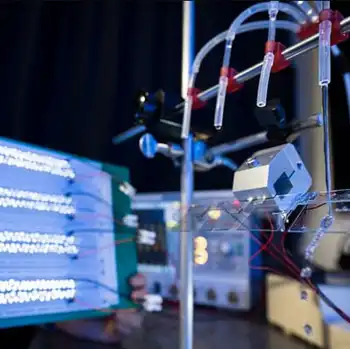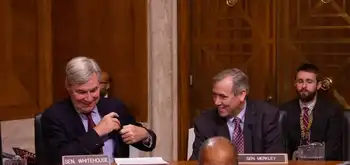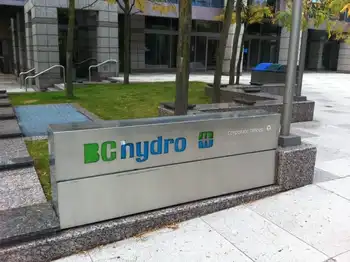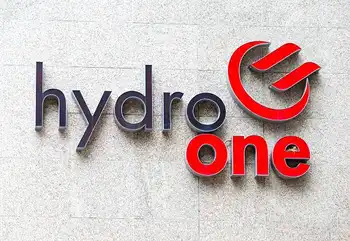Utility skeptical about wind powerÂ’s potential
By Scottsbluff Star-Herald
Arc Flash Training - CSA Z462 Electrical Safety
Our customized live online or in‑person group training can be delivered to your staff at your location.

- Live Online
- 6 hours Instructor-led
- Group Training Available
“I would gladly pay customers what the power generated is worth,” Skinner said. “I’d rather pay you, my customer, then send the money out of state.” But the concept, he said, is flawed.
Power distributors have to worry about providing consistent electricity year round, maintaining infrastructure and generating power efficiently. The only way to pay for that infrastructure is through the sale of electricity. A power customerÂ’s base service charge each month covers only administration, billing and metering.
There are two components to pricing electricity: demand peaks and energy use. Most utilities only distribute electricity, and they have to pay for energy used and for potential peaks in demand. A peak would occur if everyone turned the lights on at once. Paying for spikes in energy is costly. The demand component is the factor not taken into account in the discussion of wind generation and net metering.
“What people want is for us to be the battery, the storage for electricity when they need extra,” Skinner said. “But we have to keep electricity flowing 24/7.” According to a study by Dr. Jack Sautter of the Institute for Energy and the Environment at the Vermont Law School, rural power costs more to service because of lack of density compared to urban service. But he also said that net metering should be a part of the mix in providing electricity. If cost shifting is a concern to the utility, it could consider a cap on net metering, which is what LB436 provides for in its one percent cap rule on local renewable power generation. Despite some arguments, net metering for locally generated electricity is not as simple as running a meter forward or backward. The avoided cost of electricity to NRPPD is about 2.7 cents. That’s the cost of the energy per kilowatt hour used. The cost of keeping the electricity flowing is about 4.3 cents. The rest of the cost of providing electricity is in the infrastructure. Skinner said if the demand for energy was flat or predictable, the costs could be lowered, but demand is not predictable. George VanHoesen, a green energy consultant and partner in Global Green Building, said the key to renewable energy is storage on the electrical power grid, but the technology is not available yet. “When we can store power on the grid, all renewable energy will move in parity with fossil fuel energy,” VanHoesen said. “Right now we’re still like cavemen. If we want heat, we burn something.” With present technology, energy cannot be stored cheaply, so it has to be generated at the same rate that it’s being used. Even if storage was free, the cost of the electricity provided by wind and solar would be more than triple the cost customers pay now since the technology is only 30 percent efficient, Skinner said. Robert Byrnes, president of Nebraska Renewable Energy Association and owner of Nebraska Renewable Energy Systems, has an opposing viewpoint. He says excess energy that is produced by individuals is sent down the line to the nearest available customer. Byrne said that the power company is making money off the generator and not having to pay for any of the infrastructure. “That infrastructure has been paid for many times over,” Byrnes said. “Where was the money going that was paying for that all along?” Skinner said that while some of the infrastructure is “60 years old, going on 80,” NRPPD is not making money off customers by charging excess infrastructure maintenance costs. “We pay for infrastructure even when the wind is not blowing,” Skinner said. “That locally produced kilowatt hour of energy may have to travel three miles on line that costs $20,000 a mile before it gets to a customer.” As a not-for-profit utility, NRPPD sets aside money for lines and maintenance until they need to be replaced. NRPPD has about 1.4 customers per mile of line. There are about 2,200 miles of line that have to be maintained. A sub transmission line costs $150,000 per mile. A three-phase distribution line costs $50,000 per mile. Single-phase costs $20,000 per mile. An electric substation costs about $500,000 to build. Poles rot, sheer winds create challenges and ice storms cause damage. Construction and maintenance of hydroelectric dams have to be paid for with proceeds from the sale of electricity as well. A federal mandate to provide electricity requires NRPPD to provide reasonable service to local users. So, providing a new service running a mile down a road could run well over $20,000 to build out depending on needed power lines. The utility picks up those costs. “I can cut costs now and look like a hero,” Skinner said. “But someone down the line will suffer.” Under current law, the NRPPD has to allow up to seven 20 kW wind turbines or 140 kW within the 3,000-customer area that it serves. Skinner says the cost to the 3,000 local customers to subsidize those turbines, if built, will be about $5.50 per month or more depending on future energy costs. “We lose 18.44 cents on the first 500kW on net metering because we have to pay for demand,” Skinner said. “As a public utility we cannot recoup subsidies through tax credits.” But Byrnes points out that conservation efforts are subsidized through the power companies. “That is not true,” Skinner said. “Conservation efforts pay for themselves.” Skinner cites several cases in which he has worked with entities to cut cost through conservation. Instead of replacing power lines to water tanks, NRPPD installed solar power cells. One program included a survey of 43 percent of the irrigation wells in the district. The survey showed that many of the wells were running 110 horsepower pumps when only 60 hp pumps were needed. The condition of the pumps was poor, so they were stirring the water instead of lifting it, Skinner said. “We were able to permanently save $1 million through conservation efforts,” Skinner said. “We save costs by reducing peak demand, meaning tremendous savings to customers. Conservation efforts in the region have saved the equivalent of 200,000 kW per year, or about half the capacity of a billion-dollar power plant.” Skinner said that the power that NRPPD buys has about a 35 percent component of renewable energy. Tri-State Generation and Transmission Association, the Colorado-based source of power for NRPPD, buys energy from super G&T Basin Electric Power Cooperative, which generates some power using wind, and Western Area Power Administration, which produces hydroelectric power. Advocates of small wind generators say that if there are enough wind generators, the wind power generated could ease the peak demand levels. VanHoesen pointed out that with meteorological advances, forecasting wind production could be used to follow electricity use, so green power could be planned for. More wind equals less coal burned, he said. Skinner is skeptical. Coal plants must burn constantly to stay efficient. “A billion-dollar coal plant produces energy most effectively at a certain level,” Skinner said. “If you rev it up and down you will wear out the plant sooner and deliver power less efficiently at more cost. Wind does not turn loose the need for capacity.” It’s the predictable output that makes big utilities favor coal and nuclear power. Dave Rich, renewable energy development manager with Nebraska Public Power District, said that wind and solar energy can’t be revved up to meet demand peaks.
Currently, there are about 10 customers with small wind generation out of 88,000 retail NPPD customers.
“It’s difficult to justify individual wind generation on pure economic terms,” Rich said. “With a retail rate of 8.8 cents, wind generation will likely be higher.”
Rich said that anytime someone generates more electricity than heÂ’s using, the utilityÂ’s cost has to be shifted to someone. But anyone who takes conservation measures and cuts electrical use also shifts those costs.
“Someone who caulks his door is cutting electricity use,” Rich said. “The meter doesn’t know if it’s wind generation or conservation.”











